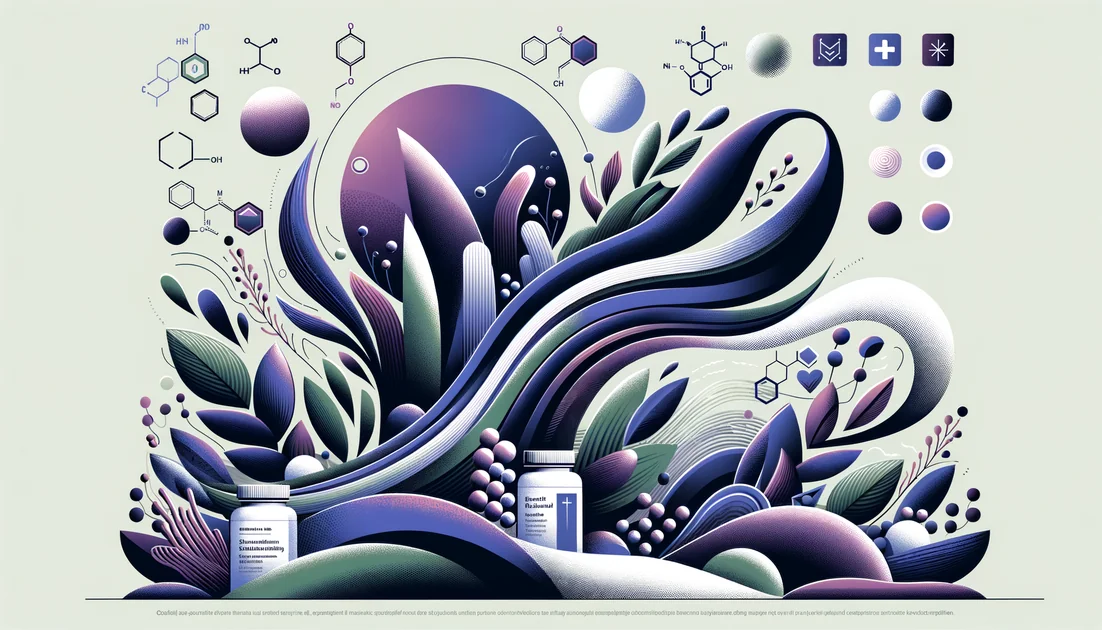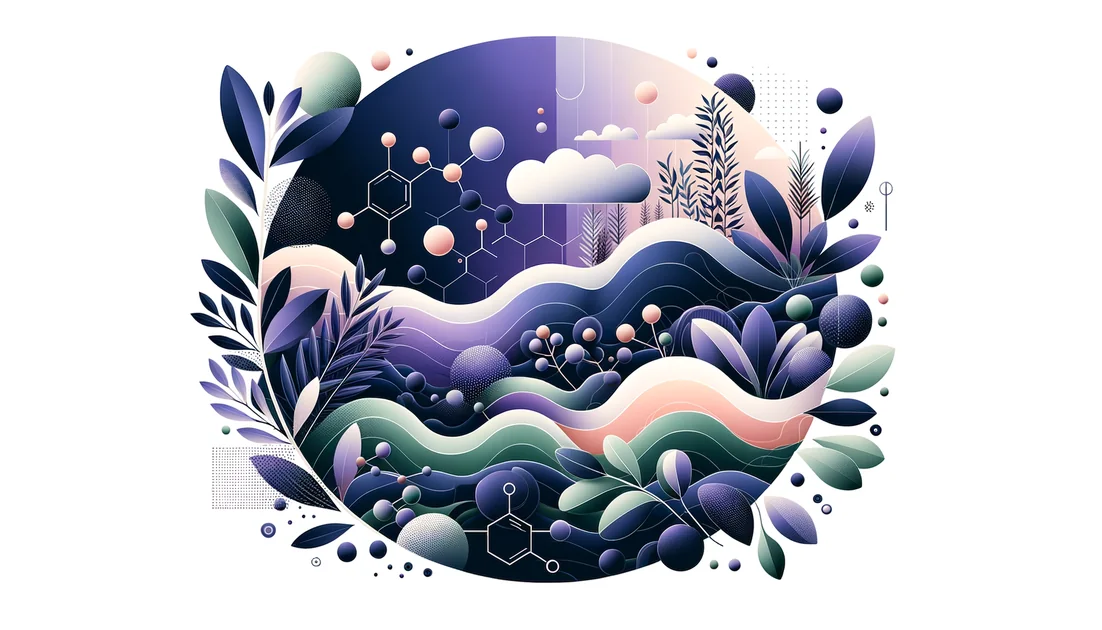
Pepper's Hidden Lever: How a Kitchen Spice Became a Modern Bio-Enhancer
You twist a pepper mill and think "flavor." Nineteenth-century chemist Hans Christian Ørsted saw something else: a crystalline alkaloid inside pepper that would, two centuries later, become a key that helps other nutrients slip into the body more easily. That molecule was piperine—and its journey runs from ancient Ayurvedic kitchens to controlled clinical trials and a few cautionary plot twists. [15]
- Evidence
- Promising
- Immediate Effect
- Within hours → 1–2 hours after dosing when co-administered
- Wears Off
- Likely within 24–48 hours after stopping, as exposure returns to baseline
From spice jar to lab bench
In 1819, Ørsted isolated piperine from black pepper, giving a name to the bite that cooks had prized for millennia. [15] Long before that, South Asian practitioners folded pepper into "Trikatu"—a trio of black pepper, long pepper, and ginger—believing it made remedies work better. Decades ago, Indian pharmacologists revisited that folk clue. As one review recounts of C. K. Atal's team, "He formed the working hypothesis that Trikatu increased the efficacy of formulations," and then set out to test it. [4] Testing moved the story from intuition to mechanism. In 2002, researchers showed piperine can down two of the body's gatekeepers—an enzyme that breaks down many compounds (CYP3A4) and an export pump that kicks them back into the gut (P-glycoprotein). Think of piperine as briefly slowing the bouncers at the intestinal door. [2]
"We showed that piperine inhibits both the drug transporter P-glycoprotein and the major drug-metabolizing enzyme CYP3A4." [2]
The human moments: volunteers, vials, and graphs
The most famous demonstration arrived in 1998. Healthy volunteers swallowed a large dose of curcumin either alone or with 20 mg of piperine. Blood draws told a simple story: with piperine, curcumin levels surged—roughly twenty-fold—within the first hour. [1] The idea that pepper could make turmeric "show up" in blood wasn't just culinary poetry anymore; it was a graph with a steep climb. A few years later, a small trial with coenzyme Q10 repeated the theme. Over 21 days, adding 5 mg of highly purified piperine raised CoQ10 exposure by about 30% versus placebo. [6] And in drug studies where outcomes can be quantified down to the minute, piperine boosted levels of the antihistamine fexofenadine after 10 days of 20 mg/day, and raised exposure to the antiretroviral nevirapine by well over 100% in a crossover study. [7][8] Even the mind's fuel supply became a test case. In a controlled, crossover study, 23 adults took resveratrol alone or with 20 mg piperine. Brain-blood flow rose more during demanding tasks with the combination—without changing mood or cognition in that short window. [9] The same research community had earlier shown in animals that piperine could dramatically increase resveratrol's presence in blood. [10] As dermatologist-researcher Nihal Ahmad put it: "We found that the addition of piperine significantly improved the bioavailability of resveratrol." [11]
How it works, in plain sight
Your gut is more like an airport than a sponge. Enzymes act like customs officers that stamp and send compounds back for exit; transporters act like moving walkways that carry them out of line. Piperine briefly slows both—less stamping, fewer walkways—so more of the companion compound makes it from intestine to bloodstream. That's why you often see piperine riding shotgun with curcumin, resveratrol, or CoQ10 on supplement labels. [2][1][6][9] Timing matters. In people, piperine appears in blood within hours, with detectable peaks after a single oral dose, and study effects on partner compounds often show up the same day. [1][14] That immediacy is why many formulas put piperine in the same capsule as their "hero" ingredient.
The plot twists: when the door swings the other way
Enhancement isn't universal. In rabbits, combining piperine (as Trikatu) with the tuberculosis medicine isoniazid actually lowered the drug's levels—a reminder that the gut is a system, not a simple lever. [13] And in rats, pairing piperine with warfarin led to a paradox: signs of inhibited metabolism, yet a drop in warfarin's blood levels and anticoagulant effect, likely due to changes in absorption or protein binding. [12] In other words, piperine can change the shape of a drug's journey, not just its height on a graph. Human studies with common medicines underline the point: piperine can raise exposure to some drugs with narrow safety windows, including antiepileptics and antivirals. [5][8] That can be helpful in a clinical trial; it can also be hazardous if you weren't planning on it.
What this means for you
If you're a health-conscious reader using curcumin for joint comfort, resveratrol for healthy aging, or CoQ10 for energy metabolism, piperine is the quiet collaborator that may help a meaningful fraction of those molecules arrive where they can act. The doses used in human work are small—often 5–20 mg per day or per dose when co-taken with the target compound—and effects can appear within hours. [1][6][7][8][9] A few practical notes from the literature you can use today:
Pair it: Take piperine with the compound you're trying to absorb; that's how the trials were designed. [1][6][9]
Mind the meds: Because it slows metabolic "bouncers," piperine can raise drug exposure—or, occasionally, change it unpredictably. Extra caution is warranted with anticoagulants, antiepileptics, immunosuppressants, HIV medicines, and other narrow-therapeutic-index drugs. [5][7][8][12]
Choose standardized extracts: Many trials used highly purified piperine (≥95–98%), which makes effects and dosing more consistent than culinary pepper. [6]
Expect immediacy, not magic: Piperine helps more molecules cross the threshold; what happens after that depends on the molecule itself. Resveratrol plus piperine, for example, increased brain blood flow acutely without short-term cognitive changes. [9]
Tradition validated—carefully
The arc from Ayurveda's Trikatu to modern pharmacokinetics is unusually clean: an old observation, a mechanistic explanation, and multiple human studies showing bioavailability changes. [3][4][2] But the cautionary chapter is just as important. When a door opens faster, traffic patterns change—and sometimes the route itself does. Respect the lever.
Looking ahead
Researchers are now exploring where piperine adds real-world value: pairing it with exercise and resveratrol to amplify mitochondrial fitness signals, and modeling interactions with common prescription drugs to predict when clinical oversight is essential. [9][16][17][5] The future of this pepper alkaloid won't be about hype; it will be about choosing the right moments to use a small, sharp tool.
Key takeaways
- •Mechanism: Piperine inhibits intestinal CYP3A4 and P-glycoprotein, helping companion compounds slip past gut 'bouncers.'
- •Human signal: 20 mg piperine with curcumin increased exposure roughly 20-fold within an hour; it also amplified resveratrol's physiological signal in the brain.
- •Practical use: Typical human dosing is 5–20 mg with the target compound (e.g., ~20 mg with curcumin or resveratrol; ~5 mg with CoQ10).
- •Timing: Take piperine at the same time as the companion ingredient; effects show up in the first 1–2 hours.
- •Who benefits: People using hard-to-absorb supplements—or stacking for training—may see more of the compound reach circulation.
- •Cautions: Because piperine can raise drug exposure, be careful if you use anticoagulants, antiepileptics, immunosuppressants, HIV meds, or other narrow-therapeutic-index drugs.
You might also like
Explore more of our evidence-led investigations, comparisons, and guides across every article style.

Momentous (Project One Nutrition, Inc. dba Momentous)
Momentous is a testing-first supplement brand with real R&D credentials—and recurring complaints about price and subscriptions

Seed Oils (canola, soybean, sunflower; high-oleic variants) vs Animal Fats (ghee/clarified butter, beef tallow)
For overall health, pick seed oils—prefer high-oleic (or olive/avocado)—for most day-to-day cooking; they support better cardiometabolic risk profiles. Use ghee or tallow mainly for flavor or occasional very-high-heat tasks, and keep portions modest to limit saturated fat. [1][2][3][12][19]


Apple Cider Vinegar (ACV)
A thousand years ago, physicians mixed honey and vinegar into a syrup called oxymel. Today, you drizzle a tangy vinaigrette and watch your glucose monitor calm down. How did this kitchen acid earn a place in both folk medicine and modern metabolic science? [1]

The Immune Vision Duo: Unlock What's Stuck
Context-dependent synergy: proven in deficiency settings (especially for persistent diarrhea and pregnancy night blindness), but additive or null elsewhere.

Tocotrienols
The stealthier cousins of vitamin E—built with springy tails that move differently in cell membranes and behave differently in your body.


